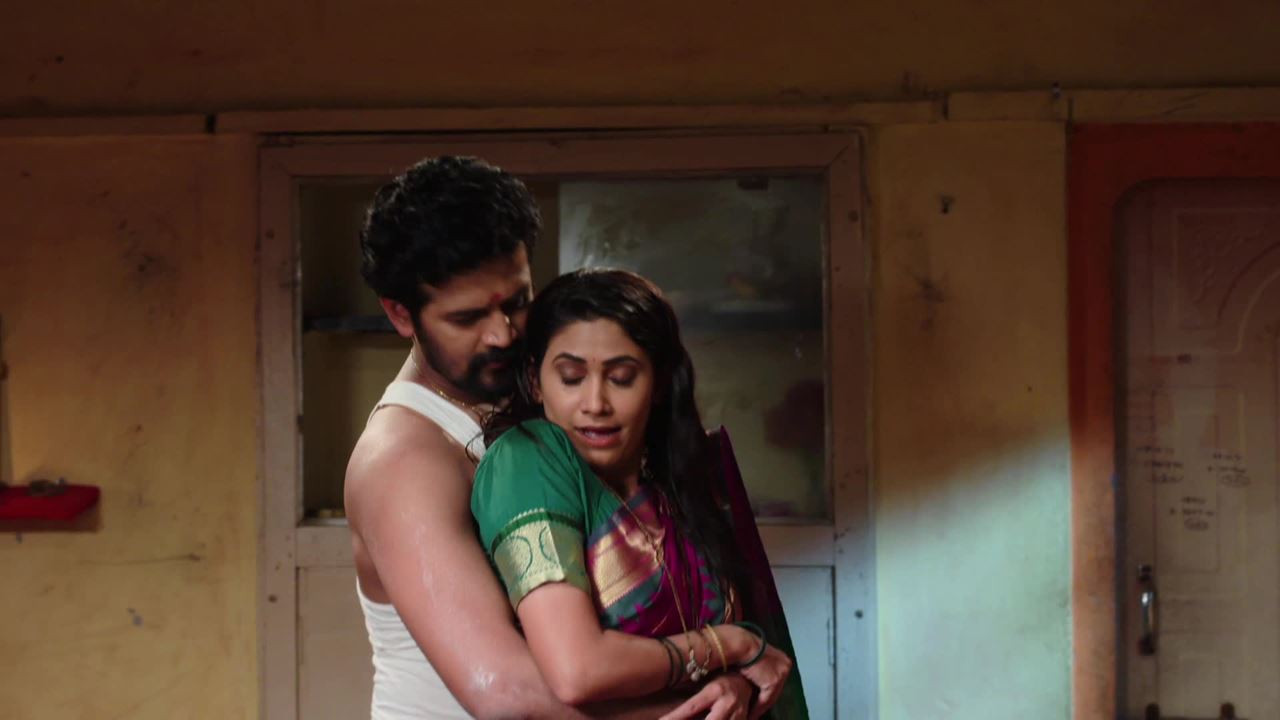Ultimate Guide To Masafun For JOS-036 Enthusiasts
What is Masafun? Masafun is a term coined by Japanese scholars to describe a unique form of traditional Japanese entertainment.
It encompasses various performing arts, such as music, dance, storytelling, and theater, and is characterized by its playful, lighthearted nature. Masafun performances are often interactive, with audience participation encouraged, and they typically incorporate elements of humor and satire.
Masafun has a long history in Japan, dating back to the Edo period (1603-1868). During this time, it was a popular form of entertainment for both the upper and lower classes. Masafun performances were often held in teahouses, theaters, and even on the streets.
Today, Masafun is still enjoyed by people of all ages in Japan. It is often performed at festivals, cultural events, and other special occasions. There are also many Masafun schools and clubs throughout the country where people can learn to perform this traditional art form.
Masafun is an important part of Japanese culture. It is a fun and engaging way to learn about Japanese history, traditions, and values. It is also a great way to experience the unique sense of humor and creativity of the Japanese people.
Masafun
Masafun, a unique form of traditional Japanese entertainment, encompasses various performing arts. Its key aspects include:
- Playful
- Lighthearted
- Interactive
- Humorous
- Satirical
- Historical
- Cultural
These aspects are interconnected and contribute to the overall character of masafun. Its playful and lighthearted nature creates a fun and engaging atmosphere, while its interactive elements encourage audience participation and foster a sense of community. The humorous and satirical elements provide comedic relief and social commentary, while the historical and cultural aspects offer insights into Japanese history, traditions, and values.
Masafun performances are a vibrant expression of Japanese culture. They offer a unique blend of entertainment and education, providing audiences with a deeper understanding of Japanese society and its people.
1. Playful
Playfulness is an essential aspect of masafun, contributing to its lighthearted and engaging nature. It manifests in various ways during masafun performances:
- Interactive Games and Activities
Masafun often incorporates interactive games and activities that encourage audience participation. These games are typically simple and humorous, designed to break the ice and create a playful atmosphere.
- Comedic Performances
Masafun performances often feature comedic elements, such as slapstick humor, puns, and witty dialogue. These comedic moments provide laughter and entertainment, adding to the overall playful tone of masafun.
- Exaggerated Characters and Situations
Masafun performances often feature exaggerated characters and situations that defy logic and (common sense). These elements create a sense of absurdity and whimsy, contributing to the playful and lighthearted nature of masafun.
- Audience Interaction
Masafun performances often encourage audience interaction, with performers directly engaging with the audience and incorporating their responses into the performance. This interaction fosters a sense of playfulness and camaraderie between performers and audience members.
The playful aspect of masafun not only provides entertainment but also serves to create a sense of community and shared experience among performers and audience members. It breaks down barriers and creates a space where laughter, joy, and imagination can flourish.
2. Lighthearted
Lightheartedness is another key aspect of masafun, contributing to its playful and engaging nature. It manifests in various ways during masafun performances:
- Absence of Serious Themes
Masafun performances typically avoid tackling serious or heavy themes, focusing instead on lighthearted and comedic subjects. This allows audiences to relax, laugh, and escape from the stresses of everyday life.
- Emphasis on Fun and Enjoyment
Masafun performances prioritize fun and enjoyment above all else. Performers aim to entertain the audience and create a sense of joy and lightheartedness through their performances.
- Humorous Dialogue and Situations
Masafun performances often feature humorous dialogue and situations, eliciting laughter and creating a lighthearted atmosphere. Comedic timing and witty remarks are essential elements of masafun.
- Whimsical and Imaginative Elements
Masafun performances may incorporate whimsical and imaginative elements, such as fantastical characters, exaggerated scenarios, and playful props. These elements contribute to the lighthearted and dreamlike quality of masafun.
The lighthearted nature of masafun provides a welcome respite from the complexities and seriousness of everyday life. It allows audiences to unwind, embrace their playful side, and experience the joy and laughter that masafun has to offer.
3. Interactive
Interaction is a defining characteristic of masafun, contributing to its engaging and participatory nature. It manifests in various ways during masafun performances:
- Audience Participation
Masafun performances often encourage audience participation, inviting audience members to actively engage in the performance. This can take various forms, such as playing games, answering questions, or providing feedback.
- Improvisation
Masafun performers often incorporate improvisation into their performances, adapting to audience reactions and suggestions. This creates a dynamic and unpredictable atmosphere, where the performance evolves in real-time.
- Call and Response
Masafun performances may involve call and response interactions between performers and audience members. This creates a sense of shared participation and builds a connection between performers and audience.
- Interactive Games and Activities
Masafun performances often include interactive games and activities that encourage audience members to participate and compete against each other. These games add an element of fun and excitement to the performance.
The interactive nature of masafun fosters a sense of community and shared experience among performers and audience members. It breaks down the traditional barrier between performers and audience, creating a more engaging and participatory form of entertainment.
4. Humorous
Humor is an integral component of masafun, contributing to its lighthearted and engaging nature. Masafun performances often incorporate comedic elements, such as slapstick humor, puns, and witty dialogue, to elicit laughter and create a sense of joy and lightheartedness among the audience.
The use of humor in masafun serves several purposes. First, it provides a welcome respite from the complexities and seriousness of everyday life. Masafun performances allow audiences to escape from their worries and embrace the playful and comedic spirit of masafun.
Second, humor creates a sense of camaraderie and shared experience among performers and audience members. Laughter is a universal language that transcends cultural and social boundaries, bringing people together in a shared moment of joy and connection.
Third, humor can be used to convey social commentary or critique in a subtle and entertaining way. Masafun performances may incorporate satirical elements to poke fun at social norms, political figures, or current events, providing a humorous outlet for expressing opinions or concerns.
Overall, the humorous aspect of masafun is essential to its appeal and effectiveness as a form of entertainment. It provides laughter, joy, and a sense of shared experience, while also allowing for the expression of social commentary or critique in a lighthearted and accessible way.
5. Satirical
Satire is a key component of masafun, contributing to its ability to convey social commentary and critique in a humorous and accessible way. Masafun performances often incorporate satirical elements to poke fun at social norms, political figures, or current events.
Satire is an effective tool for social commentary because it allows for the expression of criticism or disapproval in a humorous and entertaining way. By using humor to convey serious messages, masafun performances can reach a wider audience and make social commentary more accessible and palatable.
For example, a masafun performance might use exaggerated characters or situations to satirize political corruption. By presenting the issue in a humorous way, the performance can raise awareness and encourage discussion without being overly preachy or didactic.
Satire can also be used to challenge social norms and promote social change. Masafun performances might use humor to highlight gender inequality, environmental issues, or other social problems.
Overall, the satirical aspect of masafun is an important tool for social commentary and critique. It allows masafun performers to convey serious messages in a humorous and engaging way, reaching a wider audience and promoting discussion and change.
6. Historical
The historical aspect of masafun is deeply intertwined with its essence and significance. Masafun has a long and rich history in Japan, dating back to the Edo period (1603-1868). During this time, masafun was a popular form of entertainment for all social classes, performed in teahouses, theaters, and even on the streets.
Masafun performances often drew inspiration from historical events, folklore, and traditional Japanese culture. Performers used humor and satire to comment on social issues and political events, providing a unique lens through which to understand the past.
The historical connection in masafun is not limited to its content but also extends to its performance practices. Traditional masafun performances adhere to specific rules and conventions that have been passed down through generations. These conventions include the use of traditional musical instruments, costumes, and stage techniques.
Preserving the historical integrity of masafun is crucial for maintaining its cultural significance and ensuring its continuity as a traditional art form. By understanding and appreciating the historical roots of masafun, we can better appreciate its value and relevance in contemporary society.
7. Cultural
The cultural aspect of masafun is deeply intertwined with its essence and significance. Masafun is not merely a form of entertainment but also a reflection of Japanese culture and traditions.
- Traditional Values and Practices
Masafun performances often incorporate traditional Japanese values and practices, such as the importance of harmony, respect, and community. These values are reflected in the way performers interact with each other and with the audience, as well as in the content of the performances.
- Historical Context
As mentioned earlier, masafun has a long and rich history in Japan. Over the centuries, it has evolved and adapted to reflect the changing cultural and social landscape of the country. Masafun performances often draw inspiration from historical events, folklore, and traditional Japanese culture.
- Artistic Expression
Masafun is an important form of artistic expression in Japan. It allows performers to express their creativity and imagination, while also providing a platform for social commentary and critique. Masafun performances often incorporate elements of music, dance, theater, and storytelling, creating a unique and dynamic art form.
- Community Building
Masafun performances play an important role in community building in Japan. They bring people together from all walks of life, providing a shared experience of laughter, joy, and cultural connection. Masafun performances often take place during festivals and other community events, strengthening the bonds between community members.
In conclusion, the cultural aspect of masafun is multifaceted and deeply ingrained in Japanese society. Masafun performances reflect traditional values and practices, draw inspiration from historical context, provide a platform for artistic expression, and contribute to community building. Understanding and appreciating the cultural significance of masafun is essential for fully appreciating its value and relevance in contemporary Japanese society.
Frequently Asked Questions about Masafun
This section addresses common questions and misconceptions about masafun, providing concise and informative answers.
Question 1: What is the origin of masafun?
Masafun originated in Japan during the Edo period (1603-1868) as a form of popular entertainment for all social classes. It was performed in teahouses, theaters, and even on the streets, often drawing inspiration from historical events, folklore, and traditional Japanese culture.
Question 2: What are the key characteristics of masafun?
Masafun is characterized by its playful, lighthearted, and interactive nature. It often incorporates elements of humor, satire, and social commentary, providing a unique blend of entertainment and cultural insights.
Question 3: What is the role of audience participation in masafun?
Audience participation is an integral part of masafun. Performers often engage directly with the audience, inviting them to play games, answer questions, or provide feedback. This interaction creates a sense of community and shared experience, breaking down the traditional barrier between performers and audience.
Question 4: How does masafun reflect Japanese culture and traditions?
Masafun is deeply rooted in Japanese culture and traditions. It incorporates traditional values such as harmony, respect, and community, and often draws inspiration from historical events and folklore. Masafun performances provide a glimpse into Japanese culture and offer a unique perspective on its history and social norms.
Question 5: What is the significance of masafun in contemporary Japanese society?
Masafun continues to be a popular and cherished form of entertainment in Japan today. It is performed at festivals, cultural events, and other special occasions, bringing people together and strengthening community bonds. Masafun also serves as an important means of preserving and transmitting Japanese cultural traditions to future generations.
In conclusion, masafun is a multifaceted and vibrant art form that offers a unique blend of entertainment, cultural insights, and audience participation. It is deeply rooted in Japanese culture and traditions and continues to play an important role in contemporary Japanese society.
Masafun
Masafun, a unique form of traditional Japanese entertainment, offers a captivating blend of playful humor, interactive engagement, and cultural insights. Rooted in the Edo period, masafun has evolved over centuries to reflect the changing social and cultural landscape of Japan.
Through its lighthearted nature, interactive elements, and satirical undertones, masafun provides a platform for both entertainment and social commentary. It fosters a sense of community and shared experience, breaking down barriers between performers and audience members.
Furthermore, masafun plays a significant role in preserving and transmitting Japanese cultural traditions. It incorporates traditional values, draws inspiration from historical events and folklore, and provides a glimpse into the heart of Japanese society.
In conclusion, masafun is a multifaceted art form that not only entertains but also educates and brings people together. Its enduring popularity and cultural significance attest to its enduring value as a cherished expression of Japanese identity.
- Donald Glover Children
- Billy Ray Cyrus Billy Ray Cyrus
- Bane Character In Batman Movie
- On Firetom Selleck 2024 Photos
- Justdoinghomeworkcom

Discover The Exciting World Of

Masafun A Comprehensive Guide

AntaraMalhar Get Romantic! Date 27102022 Online Voot